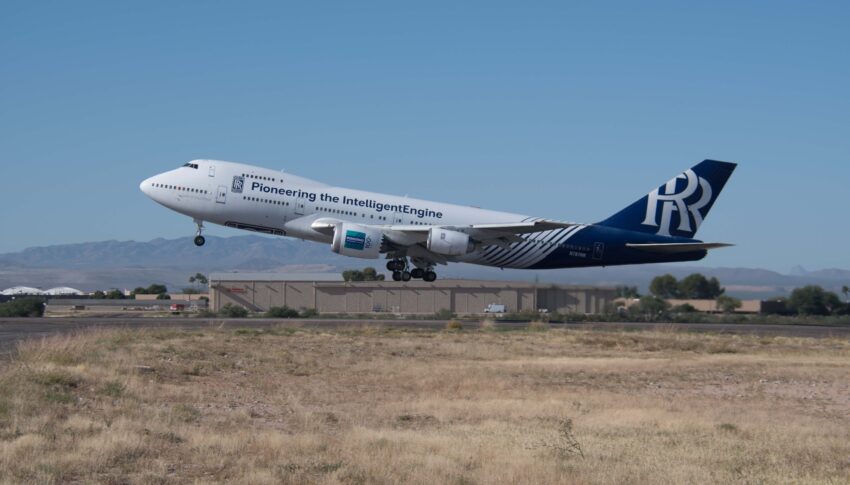Sustainable aviation fuel, or SAF, is a critical part of aviation’s plans to achieve net zero carbon equivalent emissions by 2050. But SAF isn’t just one fuel, it’s a series of fuels, with disparate feedstocks, methodologies and technologies. We sat down with Alastair Hobday, associate fellow for fuels and lubricants at Rolls-Royce, who highlights the challenges ahead for SAF, and how the industry is planning to meet them.
For SAFs, “fundamentally, we’re actively avoiding engagement with anything in competition with food use, anything that’s grown in areas where you could potentially grow food crops, et cetera, and not things that actively encourage deforestation,” Hobday tells us. “There are pathways in development that use materials such as forestry waste, roots from materials that you can’t eat, and so on — those kinds of materials are key.”
“There’s a significant focus on the technical suitability of SAF, but absolutely key, as well, is the understanding around sustainability. I get involved a lot through ASTM and elsewhere in terms of technical suitability and fuel pathways,” he notes. “There’s almost a parallel activity within the wider industry community around what’s genuinely considered sustainable. And we’ve definitely got an eye on that all the time.”
At present, the high-readiness, more widely available pathways largely revolve around plant oils — in other words, used cooking oil — so primarily what would have been waste materials. There is an inherent feedstock volume limit here, and the feedstock represents a significant proportion of the final fuel cost.
In the near-term, sustainable fuels are likely to move to options like municipal waste as a feedstock, as well as more advanced plant sugars, with options like e-fuels and combining hydrogen with captured carbon further in the distance.
Hobday cites a commonly accepted expectation that by 2050 the industry will need roughly 500 million tonnes of fuel, so to achieve net zero goals roughly this amount will need to be produced sustainably.
A likely split, he says, is that “by 2050 10 percent or less is via the lipids: fats and oils, HEFA-type fuels. The next 30 to 40 percent is municipal solid waste and some of those forestry waste and plant sugars to jet type routes. And then the remaining kind of 40 to 50 percent is really via power to liquid, so e-fuels, using renewable electricity to drive the electrolyser to generate hydrogen from water and then combine that with either captured carbon from the atmosphere or a rich carbon stream from an industrial process like a concrete facility.”
The challenge of fuel specifications and standardisation is managed by standards organisation ASTM, and Hobday highlights that Rolls-Royce along with other jet engine and airframe manufacturers is represented in that group.
Sustainable kerosene composition depends upon both the feedstock used, and the chemical processing it undergoes. These compositional differences can be influential in terms of things like o-ring seal compatibility, and engine emissions characteristics.
Challenges include standardisation and specification of fuels, given sustainable kerosene produced by one process may well have some different hydrocarbon and other properties to fuel produced by another. Early discussion on this has revolved around the lack of some sulphur aromatics in early pathways that were needed for certain engine seals to swell, with current open topics including analysis of the contrail and other non-direct CO2 emissions from various kinds of SAF at altitude.
In many ways, the SAF question remains inherently economics: it is a matter of supply, demand and price. At present, high price means that demand is suppressed, but a growing number of airlines are investing in SAF as a means to ‘show willing’ when it comes to their emissions reduction goals, and a growing number of regulators are looking to put in place percentage mandates by certain time periods as a way to drive demand and incentivise production. his will in turn start to address the current cost gap between fossil fuels and their sustainable equivalents.
Together with technological advancements in production, methodology, feedstocks and processes, this demand stimulation looks set to continue the narrative around SAF over the coming years and decades.
Author John Walton
Published 29th November 2022
Feature image copyright Rolls-Royce PLC




